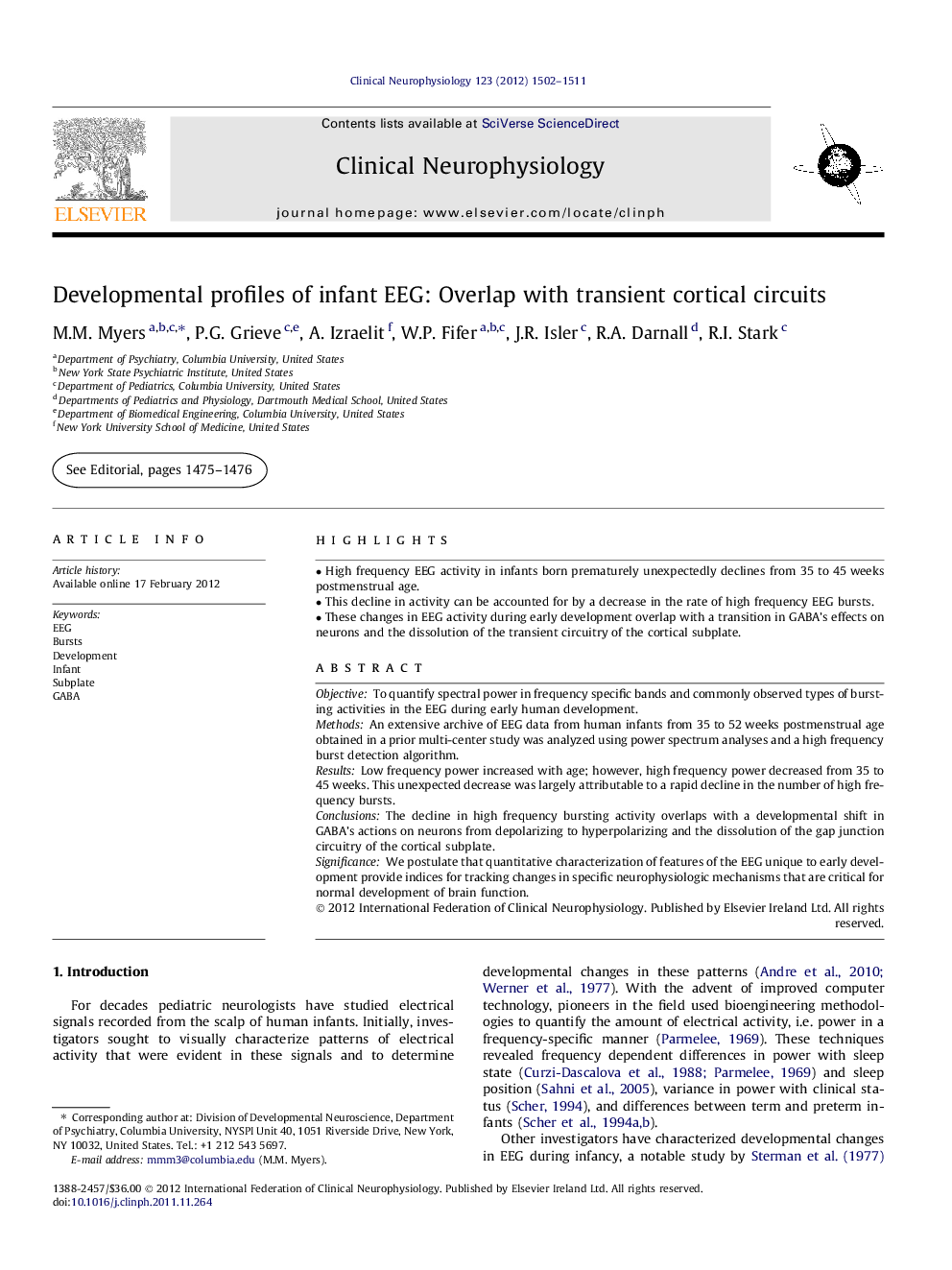| Article ID | Journal | Published Year | Pages | File Type |
|---|---|---|---|---|
| 3043416 | Clinical Neurophysiology | 2012 | 10 Pages |
ObjectiveTo quantify spectral power in frequency specific bands and commonly observed types of bursting activities in the EEG during early human development.MethodsAn extensive archive of EEG data from human infants from 35 to 52 weeks postmenstrual age obtained in a prior multi-center study was analyzed using power spectrum analyses and a high frequency burst detection algorithm.ResultsLow frequency power increased with age; however, high frequency power decreased from 35 to 45 weeks. This unexpected decrease was largely attributable to a rapid decline in the number of high frequency bursts.ConclusionsThe decline in high frequency bursting activity overlaps with a developmental shift in GABA’s actions on neurons from depolarizing to hyperpolarizing and the dissolution of the gap junction circuitry of the cortical subplate.SignificanceWe postulate that quantitative characterization of features of the EEG unique to early development provide indices for tracking changes in specific neurophysiologic mechanisms that are critical for normal development of brain function.
